Table of contents
Why is wild rice not rice? Wild rice belongs botanically to the genus water rice ( Zizania) and is not a wild form of rice ( Oryza sativa ; see details below). Because Native American tribes originally harvested this wild rice, it is also called Indian rice or Indian grain. 1 Wild rice is available in organic quality ( organic), but is not raw because it is kiln dried.
Use of wild rice in the kitchen:
The 1-2 cm long, dark brown to black fruits of wild rice are used in a similar way to rice or other grains, with northern wild rice ( Zizania palustris) being particularly used for commercial purposes.
What does wild rice taste like? When cooked, wild rice tastes slightly nutty. Although it is very similar in color, it should not be confused with black rice. The relatively expensive water rice is often found mixed with white long-grain rice (possibly parboiled), basmati rice or brown rice. The aromatic wild rice is suitable steamed as an accompaniment to curry or stew, in a pan with pulses or as wild rice with vegetables. The nutty wild rice also tastes good as a gratin, casserole or as an ingredient in soups. When cool, wild rice can be prepared with vegetables as a salad or with fruit for dessert creations.
Dried wild rice grains can be processed into groats, flakes or flour. This can be used to make baked goods.
Vegan recipe for wild rice with thyme carrots:
Ingredients (for 4 people): 200 g wild rice (organic), 6 carrots, 1 onion, 2 cloves of garlic, 30 g vegan vegetable margarine, 200 ml oat cream, lemon zest from one lemon, lemon juice from half a lemon, 2 teaspoons thyme, some salt andpepper.
Preparation: Rinse the wild rice with cold water and soak in a pot of water for a few minutes. Meanwhile, peel the carrots and cut into thin slices. Chop the peeled onion. Peel the garlic cloves and cut into thin slices. Melt the margarine in a pan. Sauté the onion cubes until translucent and then add the carrot slices. Cook the wild rice according to the instructions on the packet. Gradually pour the oat cream into the pan with the carrots. Add the garlic slices, lemon zest and juice after about 10 minutes and simmer for another 10 minutes. Finally, add thyme, salt and pepper.
Vegan recipe for carrot soup with wild rice:
Ingredients (for 4 people): 100 g wild rice (organic), 800 g carrots, 200 g potatoes, 1 onion, ginger (a 2 cm piece), 1 red chili pepper, 1 L tap water, 200 ml vegetable cream ( soy cream or oat cream), 1 L vegetable stock, 1-2 tbsp lime juice, 75 g dried cranberries, 2 tbsp rapeseed oil, coriander, a little salt, pepper and nutmeg.
Preparation: After washing the wild rice, cook it according to the instructions on the packet. Wash, peel and chop the carrots and potatoes. After peeling, dice the onion and ginger. Clean the red chilli pepper, cut it lengthways, remove the seeds, wash and chop finely. Heat the rapeseed oil in a large pot and sauté the prepared ingredients (except the wild rice). Deglaze with water and some of the cream. Then stir in the vegetable stock and simmer covered for approx. 20 minutes. Then puree the soup. Add the drained wild rice to the soup. Season with salt, pepper, nutmeg and lime juice. Serve the soup with the remaining cream, the cranberries and roughly chopped coriander.
Vegan recipes with wild rice can be found under the note: " Recipes that have the most of this ingredient ".
| Not only vegans or vegetarians should read this: Vegans often eat unhealthily. Avoidable nutritional errors. |
Shopping - where to buy wild rice?
Pure wild rice (organic quality) can usually only be found in delicatessens (e.g. Globus), on the Internet (e.g. Reishunger, Puravita, Brack), in health food stores, organic shops or organic supermarkets such as Alnatura and Denn's Biomarkt (e.g. as wild rice natural organic or Manoomin, see below). In supermarkets such as Coop, Migros, Volg, Spar, Aldi, Lidl, Hofer, Rewe, Edeka etc. you can usually find wild rice in the form of mixed rice packs (wild rice mix e.g. with long grain rice, parboiled rice or basmati rice) - also from organic farming. Due to its higher moisture content, wild rice is more difficult to store than rice, so storage and end products are also more expensive.
Preparing wild rice:
Wild rice should first be rinsed well with cold water. For the subsequent preparation, depending on the desired consistency, add two to three times the amount of boiling water and let the rice simmer for about 45-50 minutes at a low heat.
Preparation times for each variety can usually be found on the packaging. These vary greatly, particularly for rice mixes or pre-treated products. However, wild rice generally requires a longer cooking time than white rice due to the drying process. The cooking time can be shortened somewhat by soaking it for a longer time (e.g. 2 hours). Wild rice is cooked when most of the long grains have burst open, revealing the white inside.
Found in the wild:
Wild rice grows naturally and wildly on the banks of rivers and lakes in North America. This makes harvesting difficult and time-consuming. In order to get to the wild grass plants, wild rice used to be harvested from canoes (and sometimes still is today during traditional harvesting). This great effort also leads to high prices, which is why wild rice is often cultivated in Canada and the north of the USA on flooded fields or in artificial water basins. 2
Storage:
Wild rice is best stored in a dark, cool and dry place. As with other types of grain or rice, take wild rice out of its packaging and pour it into a storage jar (tin). This prevents harmful substances from the packaging from penetrating the rice. Information on the best-before date can vary depending on the product in question.
Wild rice should not be stored next to odorous foods such as coffee, tea or spices, as it will otherwise absorb their odor.
Ingredients - nutritional values - calories of wild rice:
The nutritional values of wild rice are as follows: The energy content of wild rice is comparable to that of white long grain rice - wild rice has 357 kcal per 100 g. These wild rice calories come mainly from carbohydrates. With a protein content of 15 g/100g, wild rice can keep up with other types of grain, such as oats (17 g) and spelt (15 g), and is richer in protein than jasmine rice (7.1 g) or basmati rice (9 g). Wild rice, like rice, is extremely low in fat with 1.1 g fat per 100 g. 3
100 g of wild rice cover 72% of the recommended daily requirement of the essential amino acid tryptophan (0.18 g/100g). With 0.86 mg of valine, 100 g of wild rice cover 53% of the daily requirement. 100 g of quinoa contain a similar amount of tryptophan as wild rice. 100 g of ripe soybeans exceed the daily requirement for tryptophan (0.59 g) and valine (2 g/100g). 3
Wild rice contains a considerable amount of manganese at 1.3 mg/100g. Buckwheat and lentils contain a similar amount of manganese per 100g, while chickpeas contain slightly more manganese at 2 mg/100g. 3 This trace element is important for the formation of cartilage tissue, among other things. 14
The phosphorus content is 433 mg/100g, which is comparable to teff or lupine meal. Unpeeled hemp seeds have a significantly higher value at 1,650 mg/100g. With a natural and balanced vegan diet we get enough phosphorus. However, many ready-made products and soft drinks contain a lot of phosphoric acid or other phosphate additives, which leads to an oversupply. This promotes the development of calcinosis, a pathological deposit of calcium salts in the skin and organs (e.g. kidneys). 15
Wild rice contains 6 mg of zinc per 100 g. Pine nuts contain a similar amount of zinc. Hemp seeds cover the daily requirement of this trace element with 10 mg/100 g. 3
Wild rice is also a good source of folic acid and niacin (ex vitamin B3). Black sesame contains a similar amount of folic acid to wild rice, while spelt is a good comparison for a similar level of niacin. Very high levels of folic acid can be found in raw lentils, and high levels of niacin in roasted peanuts. 3
The complete ingredients of wild rice, the coverage of the daily requirement and comparison values with other ingredients can be found in our nutrient tables. In the article Nutrients explained you will get a detailed insight into the topic.
Health aspects - effects:
Is wild rice healthy? Wild rice is said to have an antioxidant effect and health-supporting effects. Pure wild rice has more minerals, trace elements and B vitamins than peeled, white rice. Wild rice also has more fiber and high-quality protein. Due to its low fat content, wild rice is ideal for a low-fat diet. 2 ,4,5
Like white rice, wild rice is gluten-free and therefore suitable for people who suffer from gluten intolerance or celiac disease. When shopping, always look for a note for gluten-free foods (e.g. the symbol with the crossed-out ear of corn).
The glycemic index (GI) of pure wild rice is low at 35. It is therefore even more suitable for diabetics than wholegrain rice, which has a GI of 50. 16 Regular consumption of white rice increases the risk of developing diabetes (type 2) because the effect is similar to that of industrial sugar. Wholegrain rice, i.e. unpeeled rice, on the other hand, can actually reduce the risk. 17
Dangers - Intolerances - Side effects:
Wild rice seeds can become infected with the highly toxic ergot fungus ( Claviceps purpurea). Infected grains are either characterized by pink or purple spots or the infected grains become significantly larger due to a growth spurt caused by the fungus. 6
Growing and harvesting wild rice in areas with water contaminated with heavy metals can lead to increased levels of arsenic and lead in the plants, which could have health consequences, according to a study. 7
Folk medicine - natural medicine:
In folk medicine, wild rice Zizania palustris is known as a diuretic and cooling agent. Wild rice is said to help with burns, heart disease, hepatosis, nephrosis, pulmonosis and stomach diseases. 8
Occurrence - Origin - Ecology:
The genus Zizania includes four species. Where does wild rice come from? Three of them come from North America, the remaining one from Asia.
North America:
- Zizania aquatica is native to the temperate east and southeast of the USA (along the Atlantic coast from the St. Lawrence River to Louisiana).
- Zizania palustris is native to Canada and the northern and midwestern United States.
- Zizania texana is endemic to a small region in Texas and is found along the San Marcos River.
Asia:
- Zizania latifolia (Griseb.) is a perennial herb native to eastern Siberia, China, Japan, Korea, Taiwan, northeast India, Myanmar and Vietnam. 4.9
Although rarely found in the wild, Manchurian wild rice or Manchurian water rice ( Zizania latifolia) was accidentally introduced into New Zealand, where it is considered an invasive species. However, it is not the fruit of this plant that is used, but the stems. The lower, fleshy, thickened stem section, which is infected with the smut fungus Ustilago esculenta, is eaten as a vegetable known as "water bamboo". 10
Cultivation - Harvest:
Traditional harvest: Wild rice grows naturally in shallow waters and lakes in the northern USA and Canada. Native Americans traditionally harvest it from boats. They bend the stalks down with a stick and use a second stick to beat the grains out of the ears. The wild rice falls into the canoe and the stalks spring back up. Some grains end up in the water. These secure the harvest for the following year. 5, 11 This wild-harvested rice is often called Manoomin rice.
Conventional cultivation and harvesting: Wild rice can now also be cultivated and harvested industrially. This is done in artificial water basins or on flooded fields. In order to produce larger grains that are easier to dehusk, hybrids of the original plant are usually used. Propeller boats travel along the banks and mechanically harvest the wild rice that has been cultivated in lakes. 5,11
Today, wild rice is grown in Minnesota, Wisconsin, California, Oregon and Idaho in the USA, as well as in Hungary and Australia.
Processing: Freshly harvested, raw wild rice is green and the fruits look very similar to the needles of conifers. Wild rice contains a lot of moisture. Therefore, after harvesting, it is dried to a residual moisture content of around 10% 18, kiln-dried or roasted.
Industrial "drying" of wild rice takes place at temperatures of around 148-176 °C (or around 300-350 degrees Fahrenheit 20), deactivates fat-splitting enzymes and can destroy valuable amino acids. This process gives the wild rice its nutty taste and is therefore not raw. The husks are then removed mechanically. 5,11 Industrially processed wild rice is usually left in water for more than a week before drying (curing) to soften the husks. This gives the seeds a consistently dark brown to black color and a harder consistency. 5,19
Traditionally harvested wild rice (often called manoomin) is not soaked in water, but is dried in the sun and roasted over a fire. Its color is lighter, more uneven, and the cooking time is shorter because it has not been soaked in water. 19
Ecological aspects:
Organic farming does not use chemical-synthetic pesticides. Artificial fertilizers and pesticides often play a major role in the conventional cultivation of wild rice. However, these agents not only increase yields, but also pose risks to the environment and its inhabitants. Mechanical harvesting using propeller boats is also not without its problems, as it can damage the remaining vegetation. 11
Danger of confusion:
Is wild rice really rice? Botanically speaking, wild rice is not rice. It is the grain of the water grass Zizania spp. Wild rice and black rice often lead to confusion due to their black color. Black rice ( Oryza sativa) is not closely related to wild rice ( Zizania). Both taste nutty, but have different flavors. Black rice has a typical whole grain flavor, while wild rice has a mild tea note. 12
General information:
Carl von Linné established the genus Zizania, whose name is derived from the Greek word zizánion for "growing in water". Like white rice ( Oryza sativa), the genus belongs to the tribe Oryzeae within the family of sweet grasses (Poaceae). 13 Therefore, wild rice should not be described as a pseudocereal, as some websites suggest: The representatives of pseudocereals do not belong to the family of sweet grasses.
Alternative names:
Wild rice has the following synonyms: water rice, Indian rice, Indian grain, Canada rice, Canadian rice or Canadian wild rice. You can also find spellings such as water rice, wild rice or wild rice. In English, wild rice is called wild rice, Canada rice, Canadian rice, Indian rice, Manomin rice (Manoomin rice), water oats, marsh oats or blackbird oats.
Keywords for use:
In addition to using the grains of the water grass for food, the water rice plant can be planted as an ornamental plant in garden ponds. 8
Literature - Sources:
Bibliography - 19 Sources
| 1. | Moyle JB. Wild rice in Minnesota. The Journal of Wildlife Management. 1944; 8: 177-184. |
| 2. | Reishunger.de Wild Reis: Besondere Spezialität aus Nordamerika. |
| 3. | USDA United States Department of Agriculture. |
| 4. | Yu X, Chu M, Chu C, Du Y, Shi J, Liu X, Liu Y, Zhang H, Zhang Z, Yan N. Wild rice (Zizania spp.): A review of its nutritional constituents, phytochemicals, antioxidant activities, and health-promoting effects. Food Chemistry. 2020; 331: 1-15. |
| 5. | Anderson RA. Wild rice: Nutritional review. Cereal chemistry. 1976; 53: 949-955. |
| 6. | Peterson LA. A Field Guide to Edible Wild Plants of Eastern and Central North America. Houghton Mifflin Company: New York City; 1999: 228. |
| 7. | Bennett JP, Chiriboga E, Coleman J, Walller DM. Heavy metals in wild rice from northern Wisconsin. Science of The Total Environment. 2000; 246: 261-269. |
| 8. | Mooselakewildrice.com About wild rice. |
| 10. | Iucngisd.org Invasive Species Specialist Group. Zizania latifolia. |
| 11. | Naturkost.de Reis (Wildreis). |
| 12. | Reishunger.de Bio Wild Reis. |
| 13. | Pflanzen-lexikon.com Zizania (Wasserreis). |
| 14. | Brodziak-Dopierała B, Kwapuliński J, Sobczyk K, Wiechuła D. The content of manganese and iron in hip joint tissue. J Trace Elem Med Biol. Juli 2013;27(3):208–12. |
| 15. | Ärzteblatt DÄG Redaktion Deutsches. Gesundheitsrisiko durch Phosphatzusätze in Nahrungsmitteln. Deutsches Ärzteblatt. 2012. |
| 16. | Fet-ev.eu Fachgesellschaft für Ernährungstherapie und Prävention. Kohlendydratqualität: Glykämischer Index und Ballaststoffindex. |
| 17. | Hu EA, Pan A, Malik V et al. White rice consumption and risk of type 2 diabetes: meta-analysis and systematic review. BMJ. 2012;344. |
| 18. | Lgl.bayern.de Getreide Wildreis. |
| 19. | foragersharvest.com Store: Hand Harvested Wild Rice (Manoomin). |
| 20. | United States Patent. Method of Curing and Drying Wild Rice. Finnell NW. Dec. 9, 1975. US3925564A. |

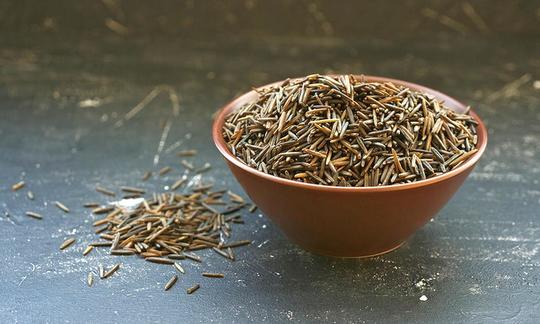

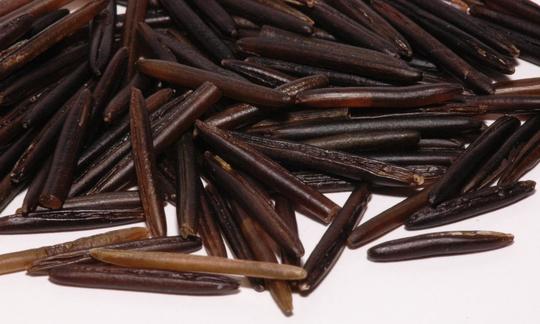

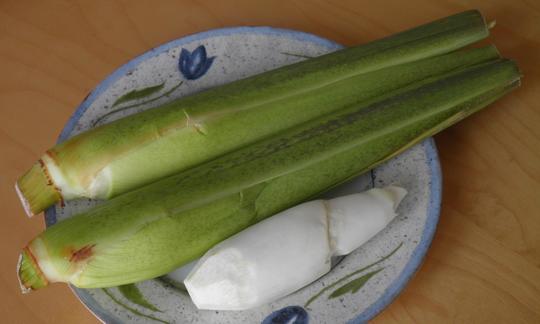

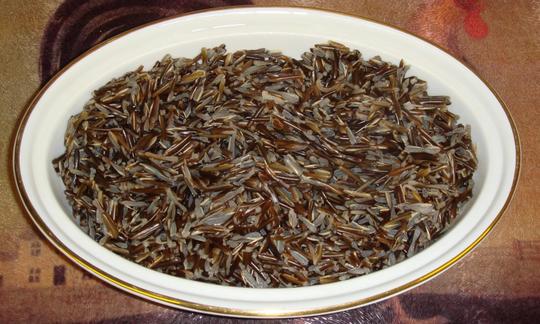

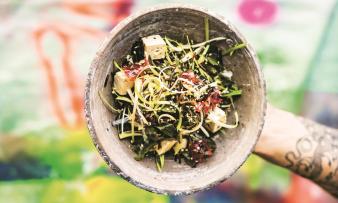


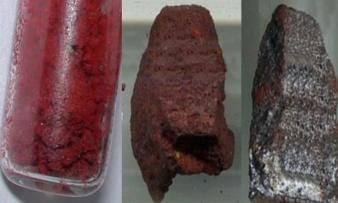


Comments